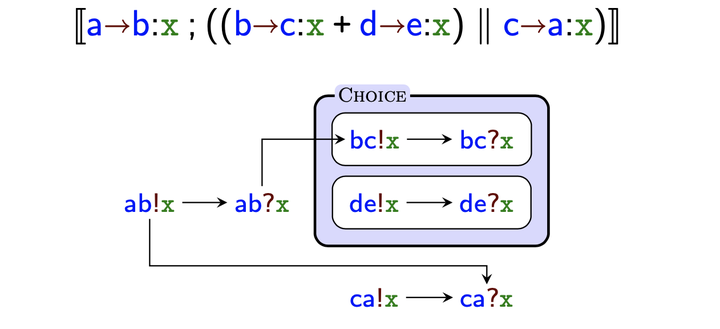Branching Pomsets for choreographies – adding choices to pomsets

– Slides for this presentation @ FCUP, Portugal–
Choreographic languages describe possible sequences of interactions among a set of agents. Typical models are based on languages or automata over sending and receiving actions. Pomsets provide a more compact alternative by using a partial order to explicitly represent causality and concurrency between these actions. However, pomsets offer no representation of choices, thus a set of pomsets is required to represent branching behaviour. For example, if an agent Alice can send one of two possible messages to Bob three times, one would need a set of 2 × 2 × 2 distinct pomsets to represent all possible branches of Alice’s behaviour. In this talk we propose an extension of pomsets, named branching pomsets, with a branching structure that can represent Alice’s behaviour using 2 + 2 + 2 ordered actions. We encode choreographies as branching pomsets and define well-formedness conditions on branching pomsets, inspired by multiparty session types, which are sufficient to show realisability of the represented communication protocol.
This is joint work with Luc Edixhoven, Sung-Shik Jongmans, and Ilaria Castellani.
Related artefacts
DCC Seminar – event where this was presented
Prototype tool that implements our theory of branching pomsets